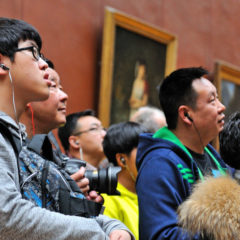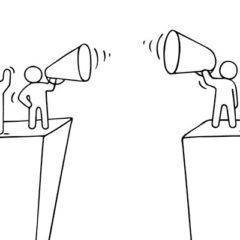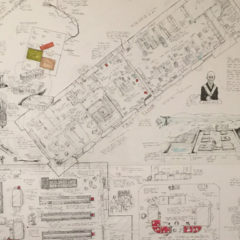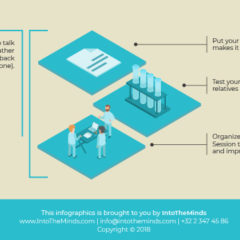How many interviews should you conduct for your qualitative research?
While determining a sample size is easy for an online survey (for example, brand awareness research), the same cannot be said for the number of interviews in qualitative research. The principle of saturation is often put forward as the ultimate argument for determining the sample size. But it is challenging to implement. To help you, we have launched the first version of an online tool to calculate the minimum number of interviews to be conducted. crédits : Shutterstock Introduction Individual interviews are...
Qualitative interviews: use of real-life scenarios (or “vignettes”)
Different methods can govern a qualitative interview (one of the leading techniques in qualitative research). One of them is the scenario method, also called “vignettes”. In this article, we discuss the use of real-life scenarios to simplify the respondents’ speaking process. What is the scenario or “vignette” method? The scenario, or vignette, is the description of a situation that is most often hypothetical and into which the social scientist wishes to immerse the respondent before interviewing...
Qualitative research on Chinese tourists undermines stereotypes
Are the leading museums doing enough to understand the customer experience they offer? In this article, I have looked at the use of Big Data to understand visitor expectations better and increase satisfaction. Even without Big Data, it is possible to have a better understanding of one’s “customers”. Proof of this today with qualitative research on Chinese tourists at the Palace of Versailles. If you only have 30 seconds Cultural institutions have a lot to gain from studying the...
Qualitative market research: using the senses in participatory research
All market research aims to achieve objectivity. This is, of course, the case with quantitative methods, but also with qualitative research methods. In today’s article, we present you with a study that shows why it is necessary to use your senses in qualitative research. Its author, Brian McDonough, defends the vision of participatory qualitative research. The case study he uses (interview of an aeroplane pilot) allows us to understand how the researcher’s active participation helped him to understand the world of the...
The impact of coronavirus on qualitative market research methods
The coronavirus crisis affects us all, regardless of the industry. The market research industry is no exception. The conduct of qualitative market research, in particular, has been impacted, since qualitative interviews or focus groups can now only be conducted remotely. A prospect asked me last week about the methodological adjustments resulting from the Coronavirus crisis. Virtualisation is, of course, the first answer and it is recommended by ESOMAR. But are remote qualitative interviews still as effective? How is communication affected by distance? A publication by...
IntoTheMinds offers market research services in France
We are happy to announce that we opened in July our office in Paris to be closer to our French customers. Located in the 9th district of Paris (13-15 rue de Taitbout), a stone’s throw from the Opera house, offers facilities to welcome clients, conduct focus groups as well as face-to-face interviews. Our Paris base camp also offers us an opportunity to take a closer and more continuous look at the vibrant retail scene. As you...
This artist uses market research techniques for a stunning visual result
While on business trip in Glasgow a few weeks ago (for the EMAC marketing conference), I visited the Glasgow Museum of Modern Art and discovered the Mitch Miller’s work. Mitch Miller is a Glasgow-based artist who has invented the concept of dialectograms, which he describes as follows : Take a dash of cartography, a pinch of architecture and a fair bit of ethnography and you have the dialectogram, graphic art that depicts place from the ground...
How to successfuly realize qualitative interviews in market research studies
Conducting good market research often requires to carry our a qualitative study. This is particulary true of customer satisfaction surveys that are often poorly designed and are not based on sound assumptions. In today’s article we reflect on some essential aspects of good qualitative research. We discuss a four-step iterative guide for interview design proposed by J. Arsel (2018) in his article entitled “Asking Questions with Reflexive Focus: A Tutorial on Designing and Conducting Interviews“. Step 1...
Step-by-step market research guide almost ready: first teaser
As I announced earlier this year, one of my goals for 2018 was to write a step-by-step guide to market research. I did this between December 2017 and January 2018 and it took me quite a lot of time to finalize it : we let the market research guide translate in English and Dutch (translating 8000 words can’t be done overnight as you can imagine). This time I didn’t do the English translation myself as I...
Tips and tricks : using observation as a market research tool
In our latest article we dealt with an experiment carried out by the Virginia Tech University that used innovative observation techniques to study human behaviors when faced with self-driving cars. Today we want to dig a little bit more on observations as a market research tool and highlight settings where such a technique can be useful. At the end of the article we will also give you 3 useful tips. Contact us for your market research...
Digital innovation: does your market segment care ?
Tech-savvy entrepreneurs love to imagine solutions to digitalize our world and change consumers’ usages. Adoption is usually the problem that occurs. It’s therefore essential to ask you this question beforehand: “do your target customers care enough to change their habits” ? To illustrate the problem, let me tell you a story. The story of my 80-year old mother-in-law. My mother-in-law writes phone numbers on the back of her cell phone In spite of her age she’s...
How to handle qualitative market research in different countries / languages
Because our market research agency is located in Belgium, we often have to deal with qualitative marketing assignments that require to conduct interviews in different languages. As you may know Belgium itself has 3 official languages (Dutch, French and German) which correspond to different cultural orientations. For firms with a national marketing strategy, it’s therefore important to make sure the market research is carried out taking those cultural differences and the resulting dynamics into account. Two...

















![Recruitment by co-optation: state of the French market [survey]](https://www.intotheminds.com/blog/app/uploads/shutterstock_2070689711-scaled-e1688048891453-60x60.webp)




![Lead generation: company practices in 2023 [Research]](https://www.intotheminds.com/blog/app/uploads/marketing-megaphone-banner-60x60.jpg)


